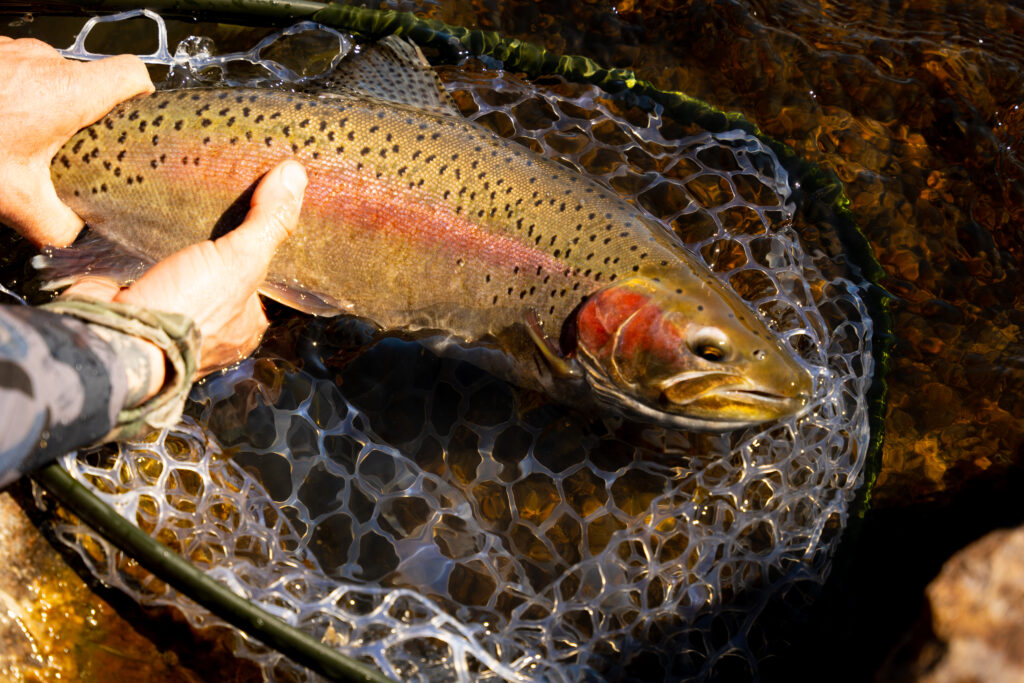Archive for November 2024
Winter Fly Fishing: Find Success
Winter Fly Fishing: Tips and Techniques for Success in Cold Weather
Winter fly fishing can be a rewarding yet challenging experience. While many anglers put away their gear when the weather turns cold, winter offers a unique opportunity to catch fish in peaceful, serene settings. With fewer anglers around, you’ll have quiet, undisturbed waters to explore, and fish can often be more active in the cooler months. However, to be successful, you’ll need to adjust your strategies to deal with the lower temperatures and slower conditions.
Here’s how to make the most of your winter fly fishing adventures:
1. Bring Layers
The key to staying comfortable while winter fly fishing is proper clothing. In the cold, you need to stay warm without restricting movement. Start with moisture-wicking base layers to keep sweat off your skin. Follow this with insulating layers, such as fleece or wool, and top it off with a waterproof, windproof outer layer. Wool layers are our preferred base layer. Typically wool will retain heat better than other materials when wet.
Make sure you have thick socks, after all you are going to be standing in the water and your toes get cold quick. For your hands, fingerless gloves or glove liners will help keep your dexterity while allowing warmth. A well-insulated hat, such as a beanie or fleece-lined cap, will also keep heat from escaping through your head.
Pro Tip: Keep extra layers in your car incase you take a spill

2. Timing Is Key: Fish During the Warmest Parts of the Day
During the winter months, fish metabolism slows down, and they become less active. This means that you’ll need to target them during the warmer parts of the day, typically between late morning and early afternoon. The water temperature is usually higher at this time, making fish more likely to feed. With the colder water temperatures fish tend to want easy meals so a good drift and the correct depth is crucial. Work deeper water and slower-moving areas of the water where they can conserve energy. Pools, deep runs, or areas with structure like submerged rocks or logs can hold fish even in colder weather.
3. Adapt Your Fly Patterns
When fly fishing in winter, it’s important to adjust your fly selection. Cold water generally means slower metabolisms for fish, and they will be less willing to chase down fast-moving flies. Focus on offering flies that move slowly or remain stationary in the water. Fly sizes depends on the type of fishing you are doing but it is a good rule of thumb to fish smaller bugs in the winter and larger bugs in the summer. Midges and beatis tend to be a good choice in the winter. Bugs typically are a little darker in the winter than the summer months. Not to mention it can be cloudy in the winter and darker bugs tend to create a better profile.
Fishing streamers in the winter requires a slow approach to mimic the movement of struggling prey in cold water. During these months, fish are less active and more lethargic, so it’s important to focus on a slow retrieve that entices fish without triggering a chase response. To effectively fish streamers in winter, cast your fly across the current and let it swing naturally, allowing it to drift along with the water’s flow. If stripping the streamer, use long, slow pulls, keeping the fly near the bottom or close to structure where fish tend to congregate. Darker colors like black, olive, and brown are most visible in low-light conditions, and subtle movements will often yield the best results, as fish are more cautious and less aggressive in the cold.

4. Techniques for Winter Fly Fishing
Fishing in winter requires patience and a slightly different approach than in warmer months. Here are some techniques to improve your chances:
- Slow Down Your Presentation: In cold water, fish are less likely to chase a fast-moving fly. Try dead drifting your flies for long periods and focus on slow, deliberate retrieves when using streamers.
- Use a Long Drift: Take advantage of the winter stillness by casting your nymphs or midges upstream and allowing them to drift naturally with the current. Try to keep your line taut so you can detect subtle bites.
- Swinging Streamers: When fishing streamers, a slow and steady retrieve can be effective. Consider swinging your streamer across the current or slowly stripping it back to you. This mimics the movement of struggling prey, enticing the fish to strike.
- Watch for Subtle Bites: During winter, strikes can be soft, and fish are often reluctant to make big moves. Be attentive and try to feel for any subtle tugs on your line. Setting the hook too soon or too hard could result in missing the fish.
5. The Quiet Beauty of Winter Fly Fishing
One of the most enjoyable aspects of winter fly fishing is the peacefulness that comes with it. With fewer anglers around, the landscapes are often breathtakingly still, and the waters are tranquil. The crisp air, the sound of the river, and the solitude can make your time on the water more than just a fishing trip—it can be a moment of connection with nature. Remember to be patient, stay safe, and embrace the challenges that winter fly fishing presents.
